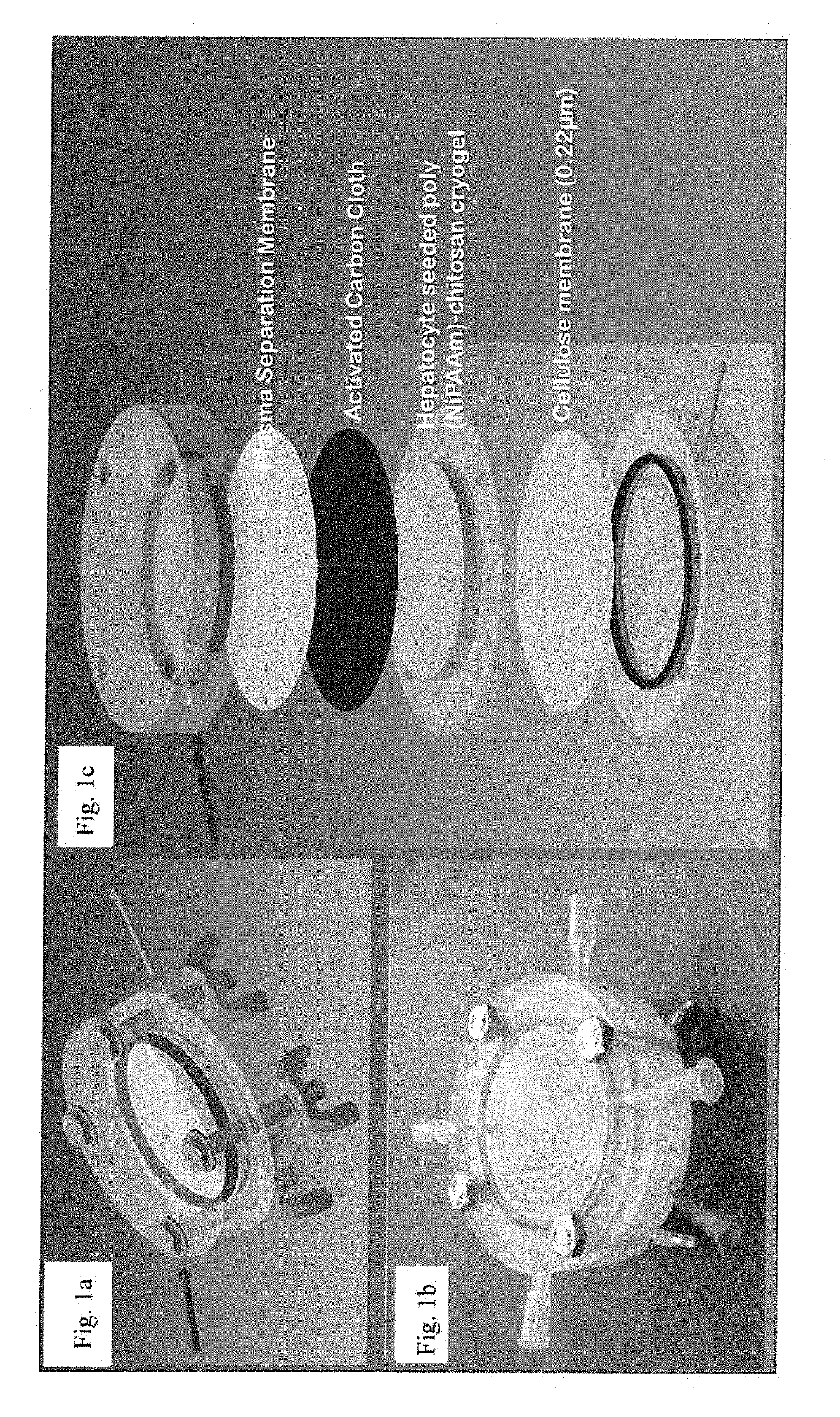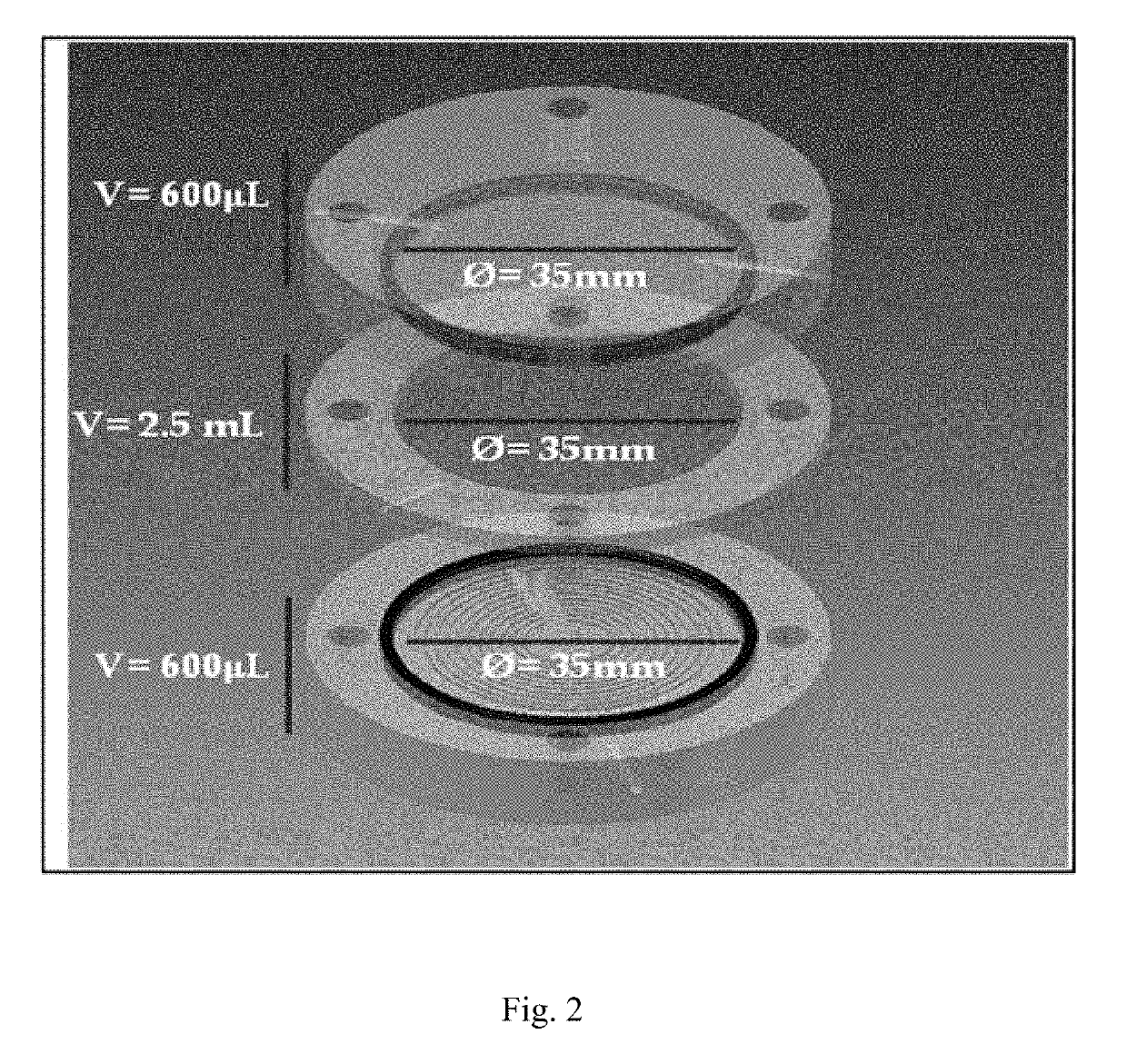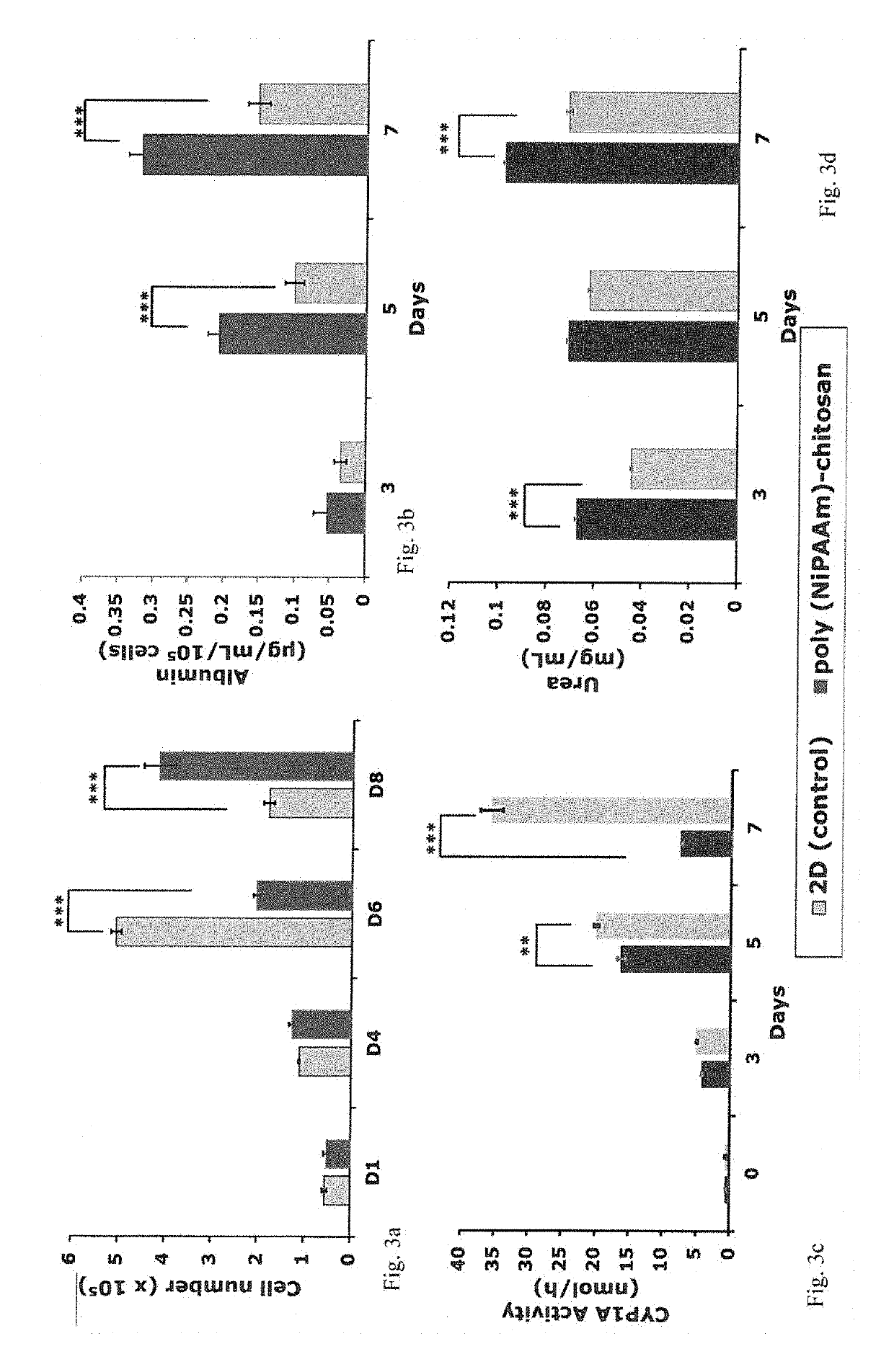Integrated hybrid bio-artificial liver bioreactor design and method thereof
a bioreactor and hybrid technology, applied in bioreactors/fermenters, specific use bioreactors, after-treatment of biomass, etc., can solve the problems of system failure, liver transplantation has a major limitation in the form of shortage of donors, and the failure of liver transplantation accounts for a large number of deaths worldwid
- Summary
- Abstract
- Description
- Claims
- Application Information
AI Technical Summary
Benefits of technology
Problems solved by technology
Method used
Image
Examples
example 1
[0066]Cell-Material Interactions:
[0067]Growing Hepatocytes on Poly(N-Isopropylacrylamide)-Chitosan Semi-Interpenetrating Network Cryogels:
[0068]Preliminary in vitro studies involved seeding poly (N-isopropylacrylamide)-chitosan cryogels with hepatocytes (HepG2 cell line) and studying the cell viability as well as functionality of the cells on the scaffold. HepG2 cells were seeded on sterilized scaffolds and cell viability was checked using MTT assay, whereas cell functionality was measured in terms of albumin and urea synthesis (as illustrated in FIG. 3). Results from the MTT assay suggested the ability of the cells to proliferate on the cryogel scaffolds, whereas results from albumin and urea assay showed the ability of the cells to maintain their functionality on the cryogel matrix. In addition, the cells were fixed on the cryogel matrices using 2.5% glutaraldehyde and observed using Scanning Electron Microscopy (SEM) to check for their adherence and morphology on the scaffold. Ce...
example 2
[0069]Another study was performed to find the effect of activated charcoal sheet on plasma treatment. The previous studies with the plasma obtained from patients with acute-liver failure showed toxic effects on the cells seeded in the cryogel matrix, resulting in loss of viability and functionality. Thus, it was required to remove circulating toxins in the plasma before it passes through the cell-loaded cryogel matrix in the middle chamber.
[0070]Studies using plasma from a rat model of acute-liver failure showed the ability of the activated charcoal cryogel as well as the cloth to remove a majority of the toxins found in the plasma such as bilirubin, ammonia and urea (as illustrated in FIG. 5).
example 3
[0071]Another experiment was performed for the perfusion based reactor initial studies where three-chambered bio-artificial liver unit was used as a perfusion-based bioreactor system to culture liver cells on the cryogel scaffold. For this, the sterile cryogel to be seeded is placed in the middle chamber, supported on a 0.22 μm cellulose membrane. Cell suspension is passed through the top chamber and allowed to reach the middle chamber. At first all outlets are closed so as to allow the cells to adhere to the cryogel matrix. After 4-5 h, the outlet in the bottom chamber is opened and fresh media perfused through the matrix at a rate of 0.2 mL / min Initial run through is collected to check for any cell loss. Samples of spent media are collected at one day intervals and analyzed for albumin synthesis, glucose consumption and ammonia accumulation in the reactor system. The results showed an increase in the albumin levels over a period of time with a decrease in glucose levels in the rea...
PUM
| Property | Measurement | Unit |
|---|---|---|
| volume | aaaaa | aaaaa |
| volume | aaaaa | aaaaa |
| depth | aaaaa | aaaaa |
Abstract
Description
Claims
Application Information
 Login to View More
Login to View More - R&D
- Intellectual Property
- Life Sciences
- Materials
- Tech Scout
- Unparalleled Data Quality
- Higher Quality Content
- 60% Fewer Hallucinations
Browse by: Latest US Patents, China's latest patents, Technical Efficacy Thesaurus, Application Domain, Technology Topic, Popular Technical Reports.
© 2025 PatSnap. All rights reserved.Legal|Privacy policy|Modern Slavery Act Transparency Statement|Sitemap|About US| Contact US: help@patsnap.com



